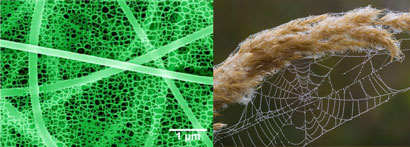Self-cleaning fabrics now even cleaner: US scientists have made a self-cleaning fabric that lasts longer, shows better antibacterial action and is more comfortable to wear than current materials.
Fabrics treated with certain compounds such as N-halamines can produce oxidative species, which kill pathogens and degrade toxic chemicals. However, the compounds either degrade rapidly under sunlight or are only used to coat the fabric’s surface so are easily washed off…
Interested to know more? You can read the rest of the Chemistry World news story here or the original research article here.
To keep up-to-date with all the latest research, sign up for the journal’s e-alerts or RSS feeds or follow Journal of Materials Chemistry on Twitter.




















